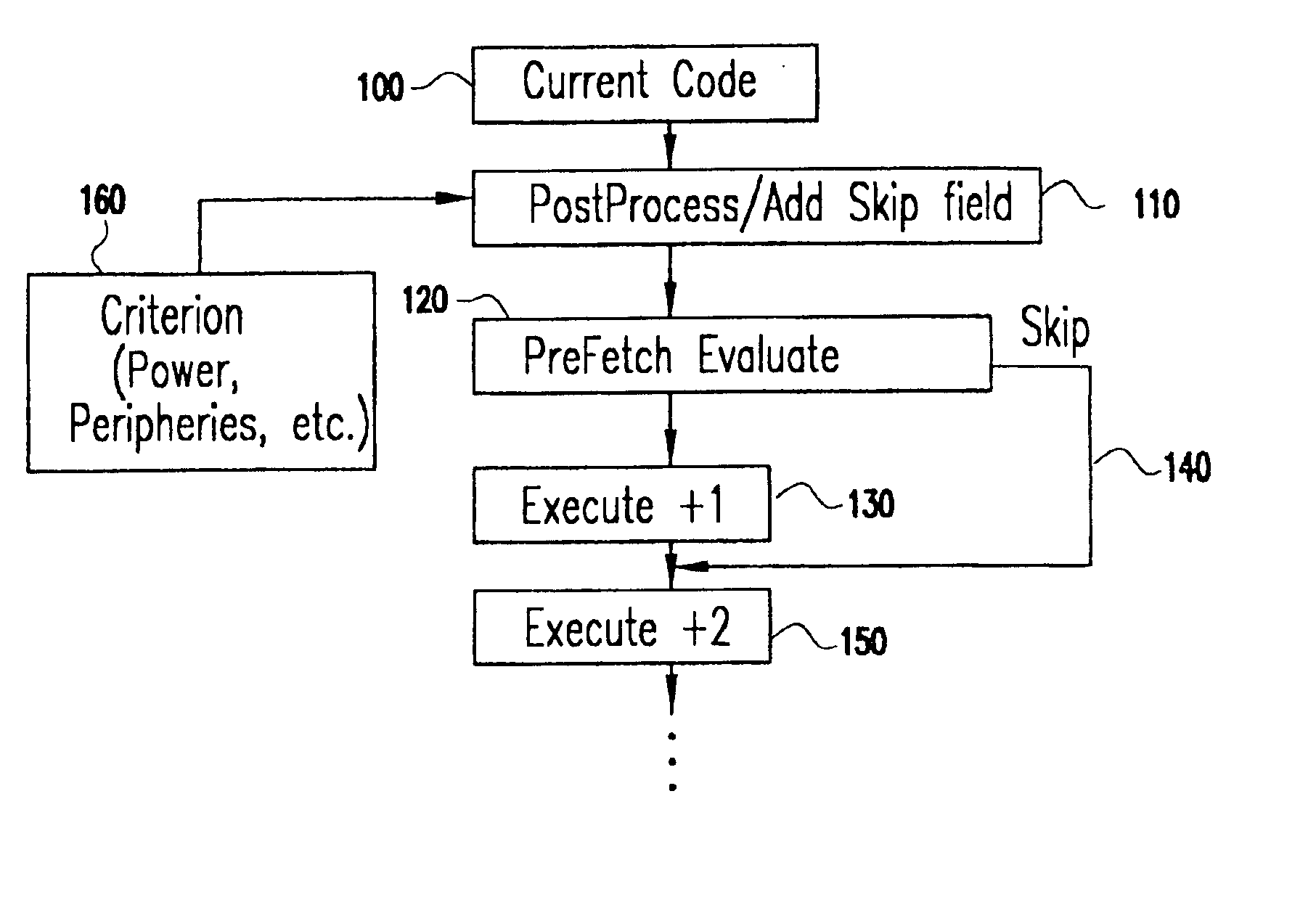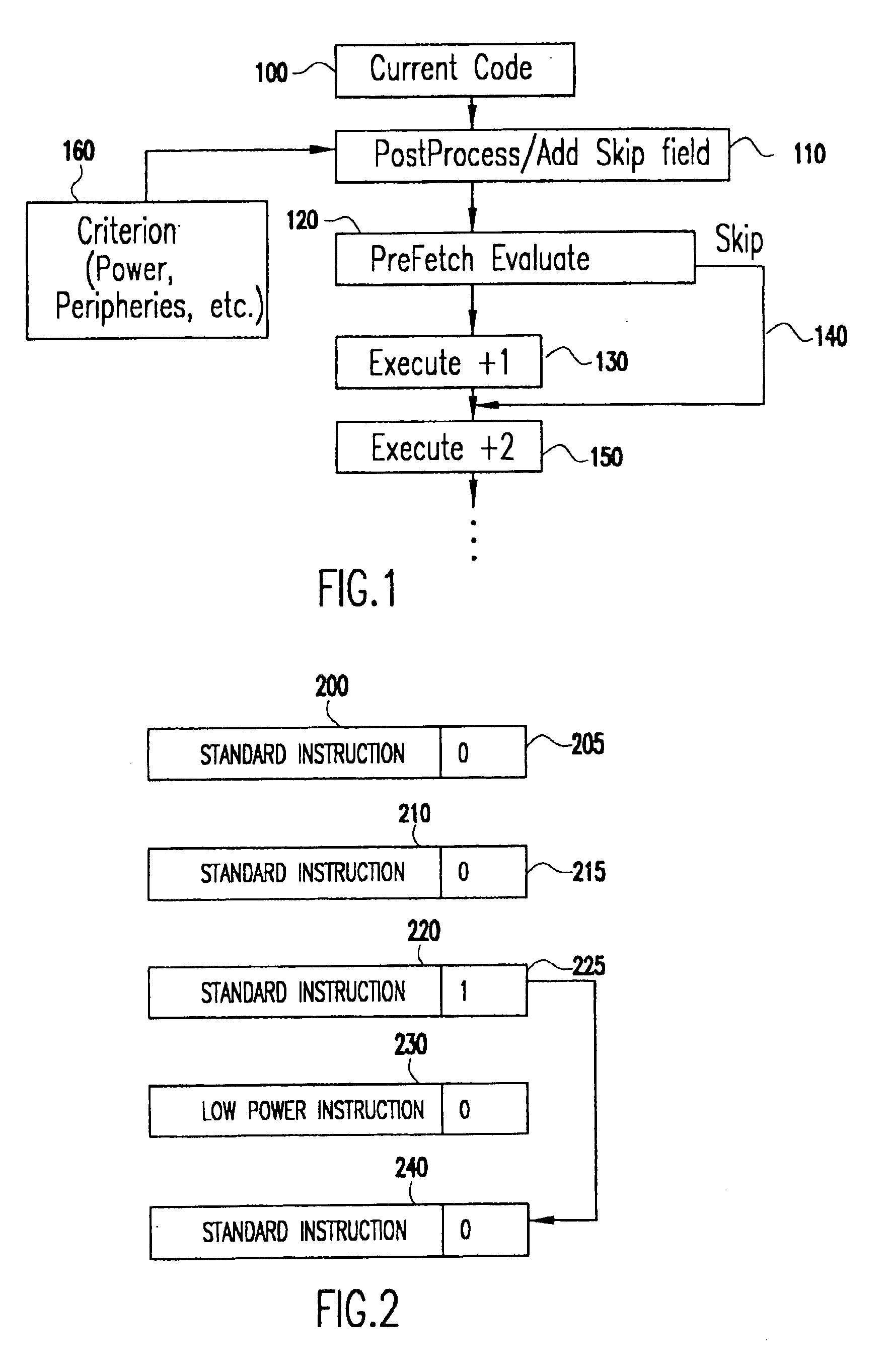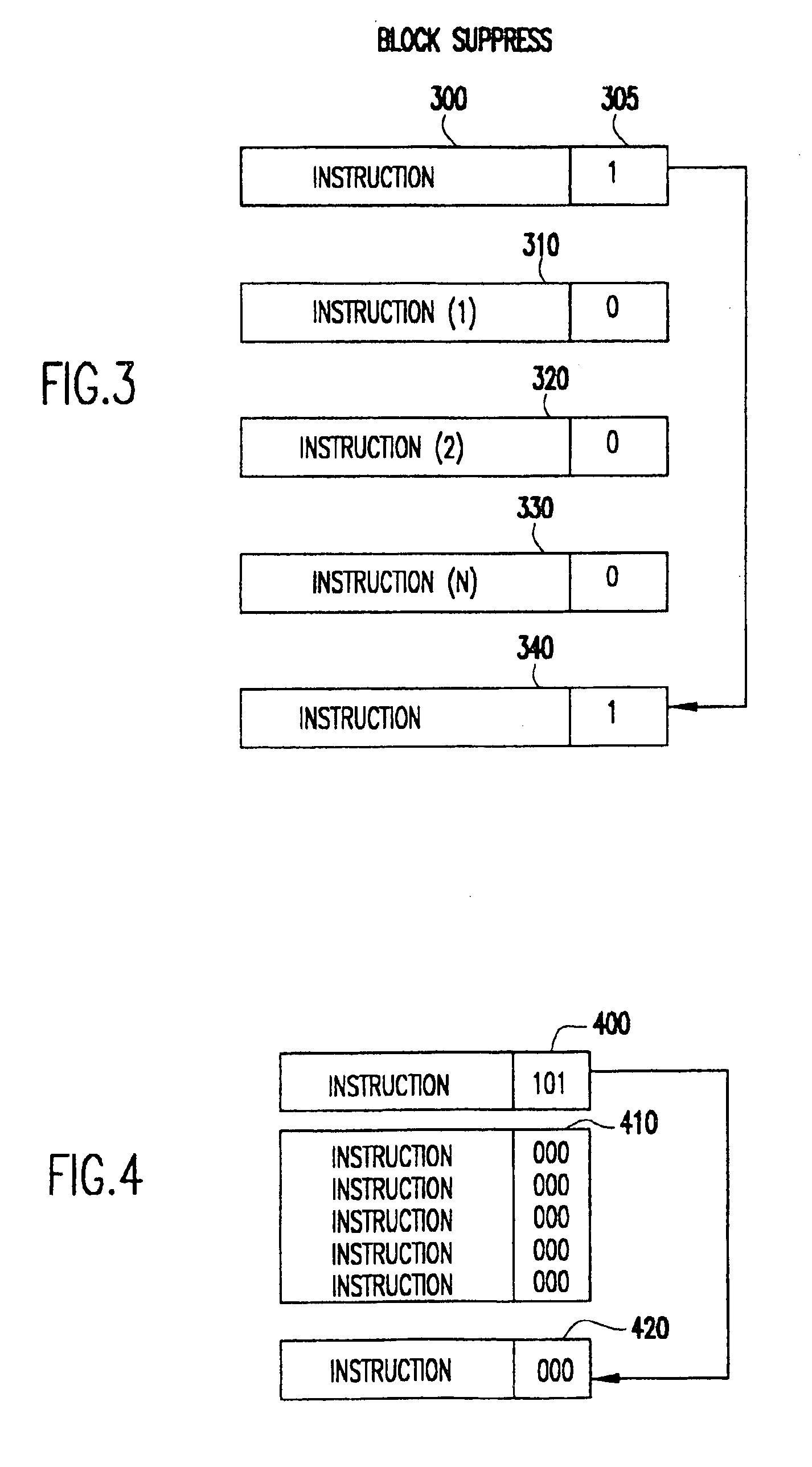In-line code suppression
a suppression and code technology, applied in the field of in-line code suppression, can solve the problems of extending initialization time, limiting performance, and reducing the efficiency of the system, and achieve the effect of reducing processing overhead and minimizing processor overhead
- Summary
- Abstract
- Description
- Claims
- Application Information
AI Technical Summary
Benefits of technology
Problems solved by technology
Method used
Image
Examples
Embodiment Construction
Referring now to the drawings, and more particularly to FIG. 1, there is shown a high level block diagram illustrating operation of the invention. The invention begins with current code 100 of an application which must be fetched from storage prior to being executed by a processor. Normally lines or blocks of code are fetched from a mass memory, decoded and stored into a smaller electronic memory from which they may be obtained as needed in less time than that required for a fetch from mass memory.
The invention is preferably implemented by post-processing (e.g. processing after the application is built and compiled) program code 100 as shown at 110 to set an execution bit associated with the operation code (opcode) immediately prior to the opcode to be suppressed. This processing of the application code can be done in many ways, the details of which are not critical to the practice of the invention. However, it is preferred to perform the processing based on a previous operating sta...
PUM
 Login to View More
Login to View More Abstract
Description
Claims
Application Information
 Login to View More
Login to View More - R&D
- Intellectual Property
- Life Sciences
- Materials
- Tech Scout
- Unparalleled Data Quality
- Higher Quality Content
- 60% Fewer Hallucinations
Browse by: Latest US Patents, China's latest patents, Technical Efficacy Thesaurus, Application Domain, Technology Topic, Popular Technical Reports.
© 2025 PatSnap. All rights reserved.Legal|Privacy policy|Modern Slavery Act Transparency Statement|Sitemap|About US| Contact US: help@patsnap.com



